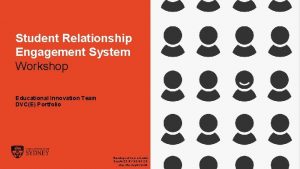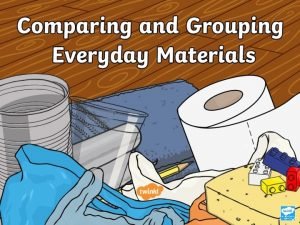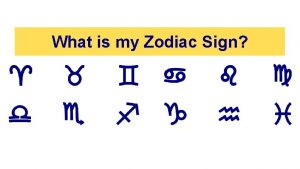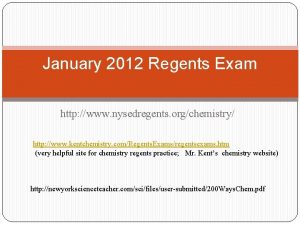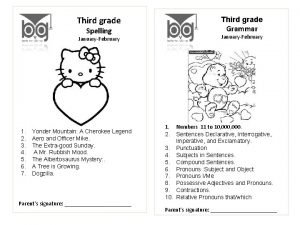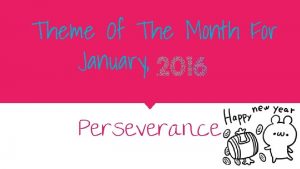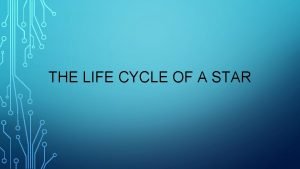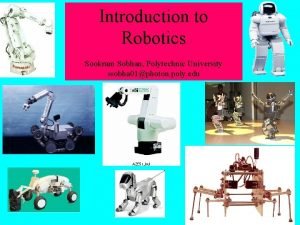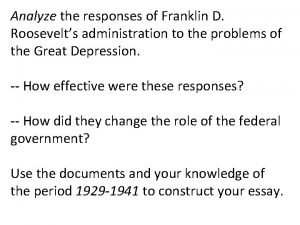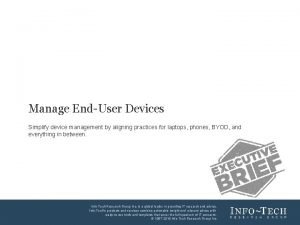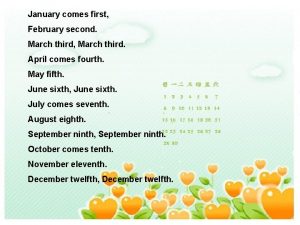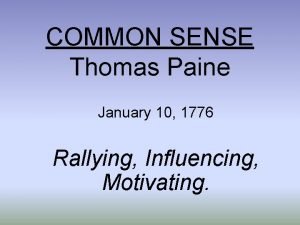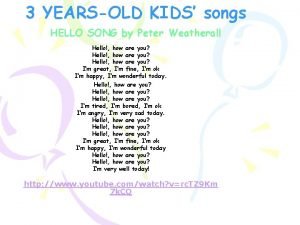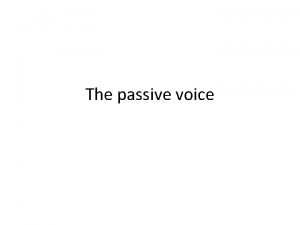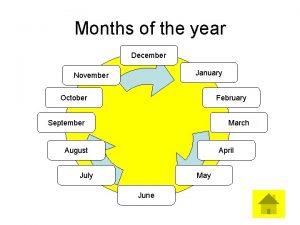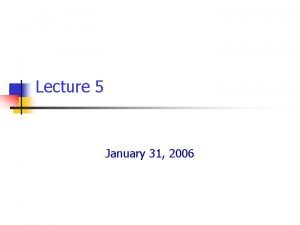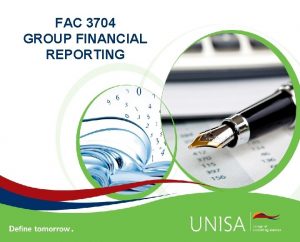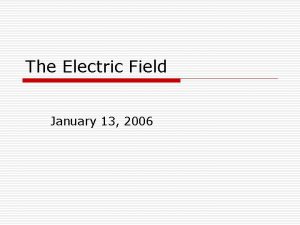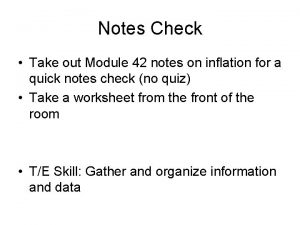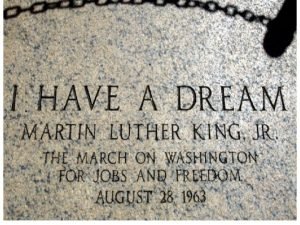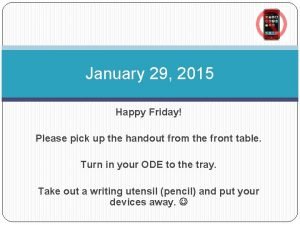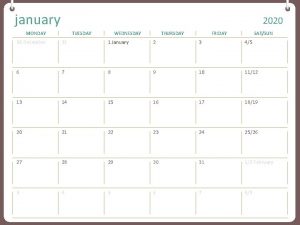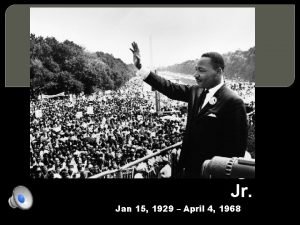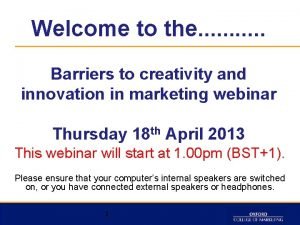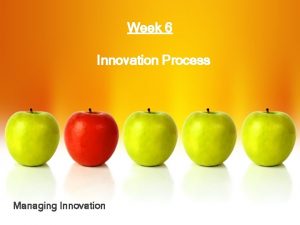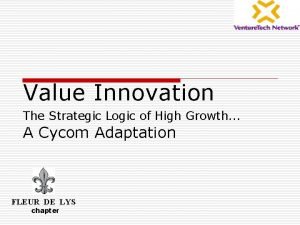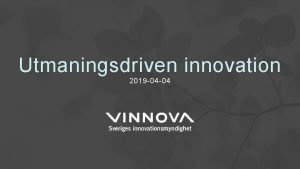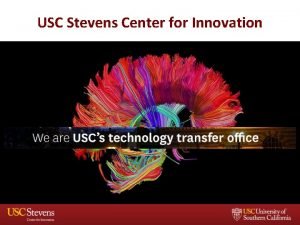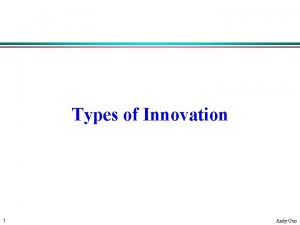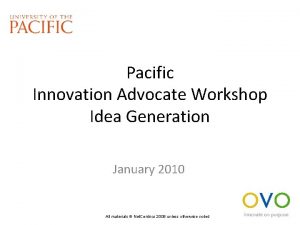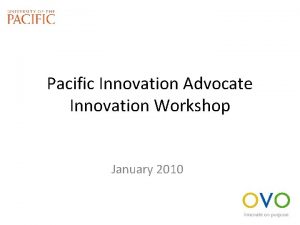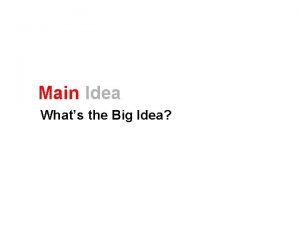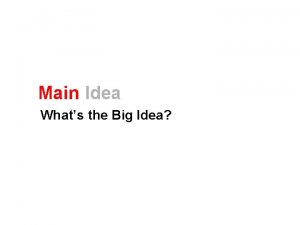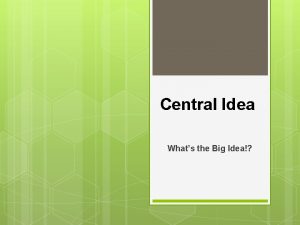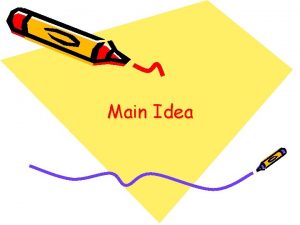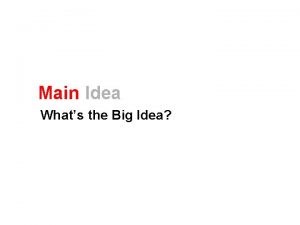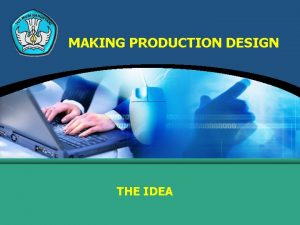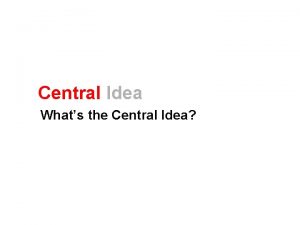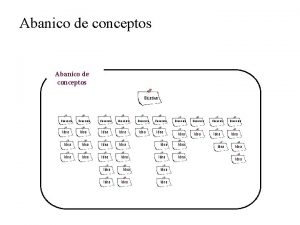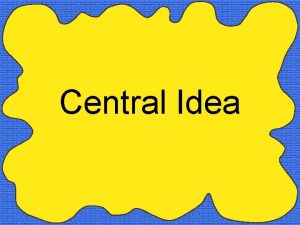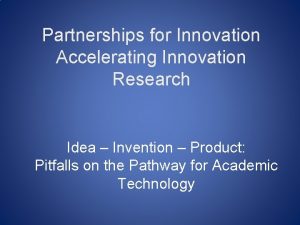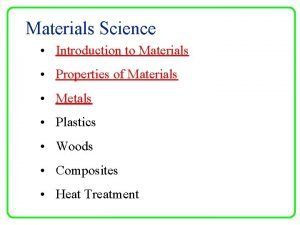Idea to Innovation Workshop January 2010 All materials























































































- Slides: 87

Idea to Innovation Workshop January 2010 All materials © Net. Centrics 2008 unless otherwise noted

Welcome • Our goal for the next few hours help you build the best presentation for your ideas – Solve the right problem – Create the best solution – Communicate the ideas effectively – Build the best case for your idea

What We Want to Accomplish

Goals for this section • Think more broadly about the problem or opportunity • Think more creatively about the solution (your idea) • Create a story about the possible future, and the benefits your idea creates • Communicate the possibilities of the idea and the investments necessary

Begin at the Beginning • Let’s back up and start at the beginning • Do you have a well-defined problem or opportunity? • Have you spent enough time thinking about the problem?

Defining the “right” problem Problem Identification • You are here because you’ve identified an interesting problem to solve, or a new opportunity to address • Let’s use some innovation tools to think through the problem and its context

Defining the “right” problem Problem or Opportunity Statement • First, let’s be clear about the problem or opportunity • Can you state it in a few words? • Example: – Pacific discards 80% of its yard waste and 100% of its food waste in landfills, yet buys over $500, 000 worth of fertilizer and mulch a year

Defining the “right” problem Exercise • Write down your existing problem statement • If you don’t have a problem statement or opportunity statement, write one down now • Less than 50 words • Quantify the problem (80% of waste. . )

Defining the “right” problem The “right” problem • What makes this the “right” problem to solve? • How can we gain more insights to ensure we are solving a valuable problem that will provide real benefits to a large group?

Tools • There a number of tools that can help you gain more insights – Voice of the customer/consumer (Vo. C) – Lead Users – Ethnography • Let’s look at how you can use each of these to gain more insights into the problem and possible ideas

Voice of the Customer • Voice of the Customer research seeks to gain stated and unstated needs from customers through deep interviews – Similar to market research in that it uses prepared questions – Usually much longer in duration, often taped or filmed – From these interviews or discussions need statements are extracted – The need statements are prioritized

Why or when useful • The voice of the customer approach helps identify stated needs and by observation or deduction uncovers unstated or unmet needs • Useful when your team can identify likely customers and can actively participate in the interactions to observe what customers say

What can you do? • Interview your friends, colleagues and others who experience the problem or need • Find out why it is important, and what they’d suggest as changes • Be sure to ask about near-term, incremental changes as well as longer-term, disruptive changes

Ethnography • Also called cultural anthropology, ethnography is an activity that relies less on prepared questions and surveys and more on intense observation • Ethnographers carefully study customers to ascertain their stated and unstated needs, and how they solve problems or address unmet needs

Demonstrated Need States Educate me “Nobody knows what’s normal. ” Carla – “I will transfer money over to savings, but I’ll transfer it back. I need that money… feels like Bof. A took my money. ” Tara – “People think they deserve what they want. ” Shannon - “If my savings reached $50, 000 I would start thinking about ‘ok, what can I do to multiply this’? ” Shannon – “When I say budget, I don’t mean sit down every quarter and draw graphs. I keep a mental picture of what’s in my account, what I can spend, what I’m saving for…” Help me budget Beth – “Savings was down the street; now it’s next door and I hope they move in. ” 15

Demonstrated Need States Ryan -- “Wow, I don’t need to buy that latte… it’s those little things that add up. ” Matt --“I’m banking with a computer and 800 number when I have a problem… I prefer it to be the opposite. ” Laurie -[Debt is] “allconsuming fires of Hell. ” “I like to be able to call up a bank and be answered by a human. ” I want a relationship with my bank “There was one company that at the end of the year they separated my expenses into categories – it really helped. ” Help me control myself Shirley – “People need more discipline with their money. ” 16 Beth – “I wish the banks would provide real, significant rewards to loyal customers. ”

What can you do? • Observe people who encounter the problem • Ask open-ended questions about their actions and behavior • Deduce unspoken or unmet needs

Lead Users • Coined by Eric von Hippl, the author of Democratizing Innovation • Lead Users are people who are creating augmented or improved solutions with existing products or services • Think “mashups” on the web or the classic example of mountain bikes

Early Mountain Bikes

What can you do? • Find people who are already attempting to address the problem • These are people who are cobbling together their own solutions

Defining the “right” problem Exercise • Think about how people interact or experience the problem you are solving • What do their observable behaviors tell you about: – How important the problem is to them – Possible solutions – Emotion/passion about solving the problem

Defining the “right” problem Trends and Scenarios • Trends are easily identified, they signal changes in the environment • Scenarios are stories about the future based on trends we choose to emphasize • What trends does your idea reinforce? What scenario does your idea solve or address?

Analysis • Trends must be carefully analyzed – Which will fizzle out? – Which will become “fads”? – Which indicate a real change in expectations and behaviors • Beware of too much emphasis on one trend or one data point • Combine and synthesize the insights

Synthesis • Once we’ve identified sources of trends, next we need to aggregate and synthesize those trends • This means determining which trends are “valid” or more probable, and which trends are likely to be combined into a larger reality • This is a relatively intensive human effort, but can pay tremendous benefits

Scenario Planning • Scenario Planning is a technique that allows your team to forecast the future based on the trends and customer insights you’ve collected • Scenario Planning seeks to forecast several alternatives futures assuming several key assumptions or trends continue to develop • Once a scenario is developed, your team can determine which factors or trends are important and the implication of the scenario

Scenario Development Choose a key area of focus Gather significant trends Select most important / relevant Project these trends 5 – 7 years into the future Develop a “scenario” or story about that future • Identify emerging opportunities or threats • Describe implications • • •

Scenarios and Implications • Once the trends are synthesized, we need to project the scenarios or outcomes that are implied based on the selected trends • This means we need to move away from considering any one trend, but looking at a number of trends simultaneously and understanding their implications • Doing this enables us to build future scenarios

Defining the “right” problem Exercise • Write down 3 -5 trends that will impact your idea – – – Demographic Societal Governmental Academic Technological • Based on those trends, create a one page scenario about the future two years from now • Describe the future based on the best outcomes for your idea

Defining the “right” problem Strategic Context • New ideas must be important to someone, and address someone’s needs or goals • Who “needs” your ideas? • Is your idea in line with Pacific’s goals?

Defining the “right” problem Exercise • Define the “consumers” of your new idea – Who benefits/wins – Who loses • Align your idea to Pacific’s goals – Does the idea tightly align to Pacific’s goals – Is the idea loosely aligned to Pacific’s goals – Does the idea conflict with Pacific’s goals

Generating the best idea Your Solution • Most of you have proposed a specific solution to the problem or opportunity you identified • Has the examination of the problem caused you to rethink your proposed solution?

Generating the best idea Change to Introduce • What kind of change do you want to introduce? – Incremental solution – Radical solution – Disruptive or breakthrough solution

Generating the best idea Diverge - Converge • Innovation techniques suggest that we should “diverge” – that is, seek many alternative solutions – before we “converge” – that is, identify a final answer or answers • Let’s back up and brainstorm some new or alternative solutions to your chosen problems

What’s an “anchor”?

What is this car worth? 2002 Model, Under 50, 000 miles, Driven to and from work, short distances

Anchoring (NLP) During normal decision making, individuals anchor, or overly rely, on specific information or a specific value and then adjust to that value to account for other elements of the circumstance. Usually once the anchor is set, there is a bias toward that value. http: //en. wikipedia. org/wiki/Anchoring

Wow! Anchoring is a real problem – People who are anchored overly rely on information – Adjust their realities to that information or value – Change their perspectives to account for the elements – They have bias toward that information or value

Issues for idea generation Anchoring creates problems – when we want creative thinking, we get constrained thinking – when we want the best ideas from everyone, we’re limited by anchors – there’s inherent bias from the start – anchors color how people think and respond

Did you bring your anchor? • The anchors are ever present. You have to identify and control or eliminate them or they will frustrate and overpower you and your team • You must confront them, and in some cases use them to your advantage Example: I’m an ENTP, an engineer, a marketer, a blogger, a father, a consultant, a libertarian, etc

Generating the best idea Exercise • Pass your problem definition to a person close to you • For 5 minutes, write down all the ideas you can to solve the problem • There’s no boundaries – any idea, no matter how crazy it seems is welcome

Generating the best idea Welcome Questions • Before you get too comfortable with your selected idea or solution, pass it around and get feedback • We are too quick to fall in love with our ideas and are rarely disciplined enough to seek constructive feedback • What would you 1) keep 2) change or eliminate 3) introduce?

Generating the best idea Exercise • Take your idea to one other person in the room • Spend 5 minutes explaining the problem and the idea you have • Ask for: – One thing to add to your idea – One thing to change about the idea – One thing to remove from your idea

Generating the best idea Incorporating Feedback • Did the insights you received change how you’d think about the problem or your selected idea? • How are you incorporating this feedback into your proposal?

Generating the best idea Evaluation • Understanding how your idea will be evaluated is important • Ensure your idea addresses the key criteria in the next slide

Generating the best idea Criteria Originality, Novelty (3 x) Improvement over existing condition (2 x) Implemented within one year Benefits a large number of people Meets an existing or future need Feasibility Impacts student learning, service or organizational performance (3 x) • Sustainability • Budget clearly defined and justified • •

Generating the best idea The “what” • What’s the idea? • Why is it novel, original or unique?

Generating the best idea The “who” • Who benefits? • How significant are the benefits? • What does it require them to change or do differently?

Generating the best idea The “how” • How does the idea get implemented? • How likely is the idea to be accepted and become the new “norm”? • How does it impact student learning, services or organization performance?

Generating the best idea The “why” • Why is this idea valuable? • Why is the timing right now?

Generating the best idea The “when” • When can your idea deliver benefits? • What are the milestones to measure to know we’re on track?

Generating the best idea Exercise • Meet with another person in the room • Tell them about your idea and justify how your idea meets the evaluation criteria • No hedging – if you are the “evaluator” look for specific information that you can understand believe

Innovation Charter

What is a charter? • A charter is simply a statement of intent, scope and goals. • A charter is often developed to define the scope and goals of a new project or new product development • The charter helps determine how the team should work, its expectations and goals in what can be a very uncertain and unclear effort

Innovation Charter • Likewise, an innovation charter helps define the intent, expected outcomes, responsibilities and scope of an innovation effort • In most cases, this charter is even more important in an innovation setting, since innovation is so unlike other corporate initiatives or projects

Importance of a charter • If you are called on to change or update an existing product or service, you’d seek the old project plan to revise and update • In many cases, you can simply use the existing models to rework existing products and services • Where innovation is concerned, there’s rarely a defined model or an existing project or initiative to copy • Additionally, innovation seeks significant change, so few existing models or projects can serve as examples

Challenges of Innovation • Additionally, innovation tends to be poorly defined, poorly scoped and has indefinite goals • Innovation requires new risks and new approaches unlike work that has been accomplished previously • Yet innovation teams and management teams need a clear statement about the effort and its potential outcomes

Innovation Charter • We have found it helpful to create an innovation charter composed of the following components: – Opportunity – Vision – Mission – Responsibilities – Goals – Priorities

Opportunity • Defining the opportunity for innovation ties back to the strategic intent • What are the key opportunities or focus areas for innovation – What is stated is as important as what is left out • This is a statement to the organization about the opportunity and focus areas for innovation

Vision • How will the innovation team or initiative accomplish the goal of innovation and address the defined opportunities • What is the longer term vision for the organization in light of a focus on innovation • What should the time horizons be for innovation

Mission • What is the defined mission for the innovation initiative or team • In terms of: – Defining a common culture – Building innovation processes – Defining innovation roles and responsibilities – Conducting innovation programs and campaigns – Ensuring education and involvement

Responsibilities • What is the work that needs to be done to build an innovation project or capability? • Who owns the responsibility to build the capability • Who will sustain that capability over time?

Goals • For this initiative, what are our specific goals for innovation. Do we seek – Disruptive innovation – Open innovation – receiving ideas from third parties • What are the expected timeframes for generating these results • What measurements or milestones will we define

Priorities • What are our specific areas of focus, or the items we seek to change • What areas will receive our investment, prioritization and attention • What concepts or ideas will we de-emphasize or ignore

Exercise - Charter • Build an innovation charter for your initiative

Communicating your idea The “elevator” pitch • Simple ideas that can be easily communicated win because people can understand them • You need to be able to communicate the rationale and value of your idea in 30 seconds or 50 words • No technical jargon, TLAs or abbreviations

Positioning Statement • For banking prospects and customers • Who need to understand how their financial actions impact their future financial success • Our Glide Path service offers insights into likely future financial scenarios • That demonstrate the most likely financial outcomes for a household based on current financial behaviors and similar household experiences • Unlike (Competitive offerings) our service offers (differentiators) 66

Template • • • For (customers, students, academic community) Who need (services, recycling, better instruction) My idea offers (features) That create (benefits) Unlike (existing situation or offerings) my idea offers (differentiators)

Exercise • Using the template provided, develop a short elevator pitch for your idea • Be prepared to present to the group • Group – provide feedback

Example • What follows is an example of an idea capture document we built with one of our clients • This is a banking idea called “Financial Glidepath”

Idea Capture Example Idea • Idea Title: Financial Glidepath • Idea Description (One paragraph description of the idea): Using historical data of households with similar attributes and characteristics, provide information on the likely outcomes if current financial actions are continued • Origination (What insights or research drove the origination of the idea): From the ethnography work we learned that many people don’t understand what they “should” do or what’s “normal” and are interested in how they compare to their peers, and what a successful path would look like. 70

Idea Capture Example Problem / Opportunity • Existing problem solved – Most consumers have poor money management which will leave them in difficult circumstances after just one significant event, and don’t understand their likely outcomes over time OR • New opportunity addressed – Providing a “glidepath” can give them the reason to “flip the switch” and examine what-if scenarios toward a better financial future. 71

Idea Capture Example Target Audience • Our target audience is: – Any banking customer who needs to better understand their actions and the logical outcome if current financial management practices continue. We especially will target those prospects and customers who have poor money management skills, to help them understand their likely future outcomes and how to address or change their existing financial practices to move toward a more positive outcome. 72

Idea Capture Example Potential offering or solution • What is our offering – Based on aggregated historical data for households of similar size and income, we project what can or might happen if existing financial practices continue. For some people this may predict a financial shortfall or bankruptcy over a certain time period if existing behaviors continue. The glidepath demonstrates what COULD happen given existing conditions and what has happened to other representative households. – Based on the Glidepath we identify poor financial habits or behaviors and seek to “correct” those in the program to determine the impact a change in behavior would have on likely future outcomes 73

Idea Capture Example Major Benefits/Value and Challenges of the New Product or Service u What benefit does the customer, the Bank, and any third party partners receive Ø Describe the benefits that each party receives by releasing the product or service Customers Bank’s Business Partners Benefits/Value Gains a realistic insight into future financial states and outcomes Demonstrates excellent customer service Confirms the direction or seeks help to change direction Wins deeper relationship with customers by helping change financial behaviors and outcomes Learns about and implements new financial habits and behaviors Grows accounts and deposits and attracts new households Challenges Needs a model to project income and spending Needs to have access to similar household information to demonstrate what other customers have experienced 74 Challenges Benefits/Value Challenges

Idea Capture Example Alignment to Strategy • How does this idea align to US Bank strategic goals, positioning or intent? – Demonstrates real involvement with the customers to help those who need the most help manage their finances and learn better habits 75

Idea Capture Example Impact of the idea • Internal – The Bank develops a model of a typical household – income, expenses, saving, etc – Validates the model with consumer data from typical households with similar size and attributes – Creates interactive, graphic representations of the likely outcomes of existing financial behaviors • External – Customers learn about the logical outcomes of existing actions and behaviors and begin to identify and correct poor behaviors and reinforce the best behaviors 76

Idea Capture Example Proposed Validation • Prototype the idea • Test with consumer panels • Pilot with small groups of consumers 77

Key Takeaways • Have a clear problem to solve or opportunity to address that’s relevant and important • Explore your recommended solution carefully using innovation tools to “diverge” and converge around the best recommendation • Communicate the value proposition of your idea effectively

Exercises and Forms

Exercise One - Problem Definition • Write a short, descriptive paragraph about the problem or opportunity you are trying to solve or address with your idea.

Exercise Two - Ethnography • What have you observed about the challenges or barriers people face when confronted with the problem you are trying to solve? How could you observe people overcoming this problem and their emotions/passions?

Exercise Three - Trends • What trends in the environment (demographic, academic, social, governmental, technological, etc) create new opportunities or reinforce existing challenges for the problem you are trying to solve. Write down at least four. • Develop a brief scenario (story) about the future 18 -24 months from now if these trends are sustained. What impact does that have on your problem and idea?

Exercise Four - Context • Describe how your idea aligns to one or more core strategies that the University of the Pacific has stated are its focus. • Who will benefit from solving the problem you’ve identified? First order beneficiaries? Second order beneficiaries?

Exercise Five - Brainwriting • Pass your problem statement to a person next to you, and take his/hers. In five minutes, write down all the ideas you can generate based on your reading of their problem statement. • Once the five minutes is up, pass the papers along to another person. Read the problem statement and the ideas just written down. Then, build on the ideas already documented and add your own. • Pass the problem statement and ideas back to the original problem owner.

Exercise Six - Collaboration • Identify a person in the class who hasn’t seen your problem statement or ideas yet. • In a small group, present your problem statement and the idea you have to resolve the problem or opportunity • Evaluators: Provide at least one concept to 1) change about the idea 2) at least one concept to add to the idea and 3) at least one concept to remove from the idea • Idea owners: document the feedback and then switch places

Exercise Seven - Evaluation • Identify a person in the class who hasn’t seen your problem statement or ideas yet. • Using the evaluation criteria, evaluate the idea that’s presented to you • • • Originality, Novelty (3 x) Improvement over existing condition (2 x) Implemented within one year Benefits a large number of people Meets an existing or future need Feasibility Impacts student learning, service or organizational performance (3 x) Sustainability Budget clearly defined and justified • Note the areas where you believe the idea needs further justification based on the evaluation criteria

Exercise Eight – Elevator Pitch • Using the template provided, develop your “elevator” pitch for your idea – – – For (customers, students, faculty) Who need (product, service, features) My idea offers (features and benefits) That solve or address a need Unlike the existing situation or other alternatives, my idea does …
 Besigheidsplan
Besigheidsplan Radical vs disruptive innovation
Radical vs disruptive innovation Sres student portal
Sres student portal Materials innovation factory
Materials innovation factory Materials innovation initiative
Materials innovation initiative Name three line segments
Name three line segments What does central idea mean
What does central idea mean Homiletical idea
Homiletical idea Controlling idea adalah
Controlling idea adalah Difference between main idea and central idea
Difference between main idea and central idea Whats a concluding sentence
Whats a concluding sentence Implied central idea
Implied central idea Gwp1092 wacana penulisan
Gwp1092 wacana penulisan Natural materials and man made materials
Natural materials and man made materials Useful and harmful household materials
Useful and harmful household materials Man made map
Man made map Adapting and adopting materials
Adapting and adopting materials Direct materials budget with multiple materials
Direct materials budget with multiple materials What does that mean
What does that mean January 27 1756
January 27 1756 Zodiac for january 20
Zodiac for january 20 January 4, 1643
January 4, 1643 January february march season
January february march season January february march
January february march January 2009 chemistry regents answers
January 2009 chemistry regents answers Nysedregents chemistry
Nysedregents chemistry January 2012 chemistry regents answers
January 2012 chemistry regents answers Life of a plant poem by risa jordan
Life of a plant poem by risa jordan 2019 ib boundaries
2019 ib boundaries Respect is a trait
Respect is a trait Paula hurlock birthday
Paula hurlock birthday January 27 1756
January 27 1756 When mozart born
When mozart born January february spelling
January february spelling What is the theme for the month of january
What is the theme for the month of january Our sun life cycle
Our sun life cycle January 24th 1848
January 24th 1848 2003 new deal dbq
2003 new deal dbq 1995 january 23 nasa
1995 january 23 nasa His birth date was on 25 january 1759
His birth date was on 25 january 1759 An asset was purchased for $120 000 on january 1
An asset was purchased for $120 000 on january 1 Analyze the response of franklin
Analyze the response of franklin 1st january 2018
1st january 2018 Trampoline syllables
Trampoline syllables Tinseltow
Tinseltow Blackberry devices working on january
Blackberry devices working on january January comes before february
January comes before february January 19, 1809
January 19, 1809 January 19, 1809
January 19, 1809 January 10th 1776
January 10th 1776 Spatial january
Spatial january Hello song by peter weatherall
Hello song by peter weatherall Your impolite tone surprises me
Your impolite tone surprises me Months of the year december
Months of the year december January 31 2006
January 31 2006 January. february
January. february January 20
January 20 January 2012
January 2012 Mozart who was born on january 27 1756
Mozart who was born on january 27 1756 January 13 2006 calendar
January 13 2006 calendar Arvod cannot find work as a mall santa in january.
Arvod cannot find work as a mall santa in january. January 15 1929
January 15 1929 January 15 1929
January 15 1929 January 29 2015
January 29 2015 Sunday, tuesday, january, saturday
Sunday, tuesday, january, saturday January 15, 1929
January 15, 1929 25 january scotland
25 january scotland 9 months before january 26 2009
9 months before january 26 2009 Help ever hurt never meaning in tamil
Help ever hurt never meaning in tamil Interventi sociali rivolti all'infanzia e all'adolescenza
Interventi sociali rivolti all'infanzia e all'adolescenza Above all powers
Above all powers I work all night
I work all night All to one reduction
All to one reduction Sistem all in all out
Sistem all in all out Spf -all vs ~all
Spf -all vs ~all Silent night holy night all is calm
Silent night holy night all is calm 馮定華
馮定華 All of you is more than enough for all of me
All of you is more than enough for all of me She's all states and all princes i nothing else is
She's all states and all princes i nothing else is There in the ground his body lay
There in the ground his body lay Above all powers
Above all powers White space innovation
White space innovation Barriers to creativity and innovation
Barriers to creativity and innovation The innovation process
The innovation process Value innovation the strategic logic of high growth
Value innovation the strategic logic of high growth Utmaningsdriven innovation
Utmaningsdriven innovation Usc innovation
Usc innovation Modular innovation example
Modular innovation example


